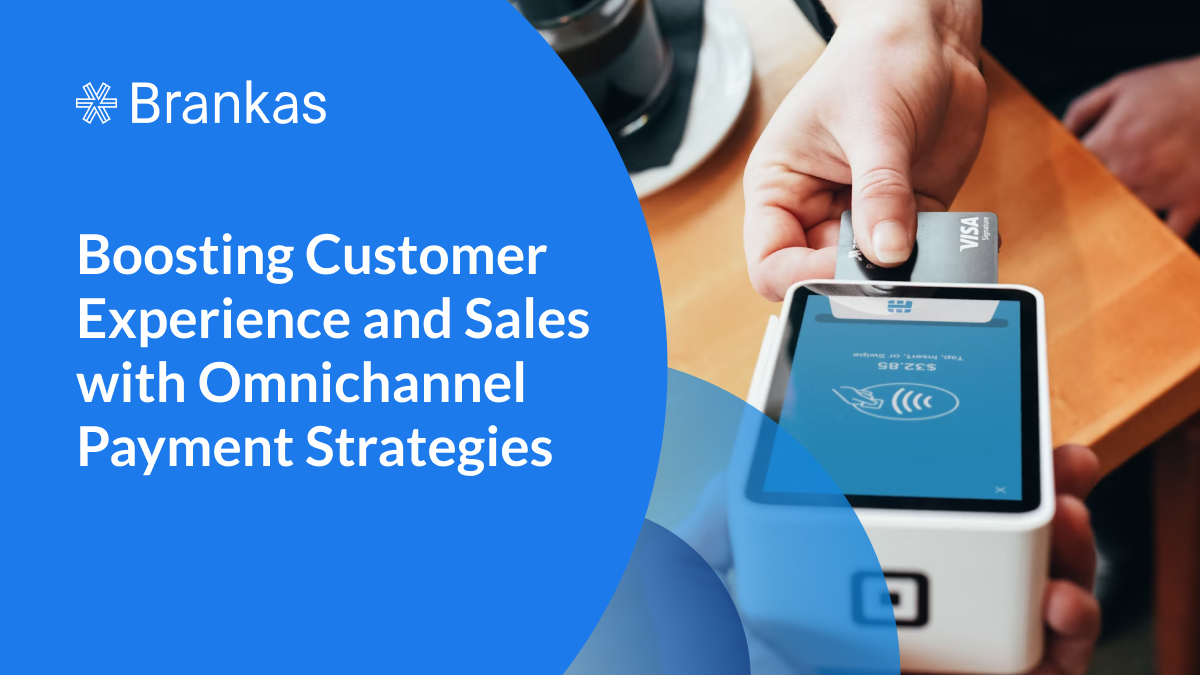Boosting Customer Experience and Sales with Omnichannel Payment Strategies
Omnichannel payment strategies are vital in today’s retail sector, where consumers seamlessly transition between physical stores and digital platforms. These strategies redefine the customer experience and play a significant role in driving sales. Integrating diverse channels, from in-store to online and mobile platforms, offers customers a cohesive and convenient journey.
Explore these illuminating statistics that underscore the importance and effectiveness of omnichannel strategies.
- Customers who engage through omnichannel shopping spend up to 300% more than those shopping through a single channel. (WorldPay)
- Customers who utilized four or more channels spent 9% more on average in the store than those who used just a single channel. (Harvard Business Review)
- Omnichannel marketplace sales contribute to 60% of all global digital payments in 2023. (McKinsey Global Payments Report)
- 87% of retail leaders acknowledge that an omnichannel strategy is crucial for business success. (Research Live)
- Failure to adopt an omnichannel approach comes with a 10% opportunity cost in lost revenue. (Porch Group Media)
What is Omnichannel Payment?
Omnichannel payment is a unified and integrated approach to payment processing that connects various channels and touchpoints seamlessly within a business. This strategy aims to provide a cohesive and consistent payment experience for customers across different platforms, such as online websites, mobile apps, brick-and-mortar stores, and other digital channels. Omnichannel payment systems have become instrumental in meeting the growing expectations of consumers for a convenient shopping experience, whether they purchase online or in-store. Customers are presented with a range of payment options customized to their preferences when they are ready to pay. These options may encompass credit cards, digital wallets, and instant bank transfers, providing flexibility to choose the method that best suits their needs.
The Channels in Omnichannel Payment
These channels ensure businesses can cater to diverse customer preferences and provide a seamless payment experience across various touchpoints.
- Card payments - payments using credit and debit cards through card readers, POS systems, or through virtual terminals
- Bank transfers - manual bank transfers or instant bank transfers facilitated by open banking
- Direct debit payments - automated payments directly withdrawn from the customer’s bank account; used commonly for recurring subscription payments.
- Mobile wallets - payments made through mobile wallet applications on smartphones
- Invoicing by text or email - invoices sent via text or email with secure payment links. Customers can click on the link to make secure online payments.
- Keyed transactions - phone orders where payment information is entered manually into a secure webpage.
- E-commerce payments - transactions made on a company’s website or third-party platforms like PayPal.
Main Components of Omnichannel Payment Systems
The key elements of omnichannel payment systems include:
- A centralized payment gateway that facilitates transactions across various channels,
- A robust inventory management system that synchronizes product availability across platforms, and
- A unified customer database that enables businesses to provide personalized and consistent interactions.
This approach ensures that customers can initiate and complete transactions using their preferred payment methods, whether online, in-store or through mobile devices, fostering a cohesive and efficient payment experience.
Benefits of Omnichannel Payments
Omnichannel payments provide a competitive advantage in the market and directly impact the bottom line by increasing sales opportunities and elevating the customer experience.
A. Enhanced Sales Opportunities
Increased conversion rates - Omnichannel payments create a smooth experience, reducing friction in the buying process. This increased ease of transaction contributes to higher conversion rates. Customers are more likely to complete their purchases when they have a choice from various payment methods.
Higher average transaction values - Offering diverse payment options tends to positively impact the average transaction value. Customers may be inclined to spend more when provided with convenient payment methods that suit their preferences. For example, the availability of buy-now-pay-later options or loyalty program integrations can encourage more transactions
B. Improved Customer Experience
Seamless shopping experience - Omnichannel payments ensure a consistent and integrated experience across all channels—whether online, in-store, or through mobile apps. Customers can start a transaction on one channel and seamlessly complete it on another. This continuity fosters a sense of ease and reliability, contributing to an overall positive shopping experience.
Convenience and flexibility - The flexibility offered by omnichannel payments enhances convenience. Customers appreciate having choices, whether it is credit cards, digital wallets, or other emerging payment options. This flexibility adapts to diverse customer preferences, ultimately improving satisfaction and loyalty.
Merchants also experience advantages with the consistency provided by an omnichannel payment solution. This solution:
- Integrates various payment methods into a unified system, streamlining the checkout process.
- Provides all-in-one reporting for simplified accounts reconciliation, facilitating efficient financial management.
- Simplifies the monitoring of sales and inventory, enhancing visibility and control.
- Consolidates customer purchase journeys across multiple channels, ensuring a cohesive and integrated experience.
- Reduces management and maintenance time, contributing to overall operational efficiency.
Implementing Omnichannel Payment Strategies
Implementing these strategies requires a comprehensive approach to technology integration, payment processing systems, and a deep understanding of customer preferences. Businesses can create a truly omnichannel payment environment that enhances customer satisfaction and drives sales by blending in-store and online experiences and providing a variety of payment options.
- In-store and online integration
- Ensure a seamless experience for customers whether they buy in physical stores or online.
- Implement systems that allow for easy transition between in-store and online shopping carts.
- Centralize inventory management to avoid discrepancies between online and in-store stock levels.
- Mobile and e-commerce integration
- Optimize mobile platforms for easy navigation and transactions.
- Integrate e-commerce platforms with mobile applications for a consistent user experience.
- Implement responsive design to adapt to various devices, providing a uniform look and feel.
Utilizing Multiple Payment Options
- Credit and debit cards
- Offer secure and efficient credit and debit card transactions both in-store and online.
- Implement card readers for in-person transactions and integrate secure payment gateways for online purchases.
- Mobile wallets
- Facilitate transactions through popular mobile wallets like Apple Pay, Google Pay, and Samsung Pay.
- Ensure compatibility with various mobile devices to accommodate a broad user base.
- Buy Now, Pay Later options
- Integrate “Buy Now, Pay Later” (BNPL) services for customers who prefer deferred payment options.
- Collaborate with BNPL providers to offer flexible payment plans, enhancing customer affordability.
Choosing the Right Payment Providers
Selecting the appropriate payment provider is a critical decision that directly impacts the security, compliance, and efficiency of your omnichannel payment system. Here is a breakdown of key considerations:
- Choose payment providers that offer well-documented and versatile Application Programming Interfaces (APIs).
- Opt for providers that offer real-time processing capabilities, reducing payment delays and enhancing the overall customer experience.
- Ensure the chosen payment provider complies with Payment Card Industry Data Security Standard (PCI DSS) requirements.
- Prioritize payment providers that employ advanced encryption protocols to secure customer data during transactions.
- Partner with payment providers committed to regular security audits and assessments.
Adopting omnichannel payment strategies presents numerous benefits that significantly impact customer experience and sales for businesses. The enhanced sales opportunities, increased conversion rates, and improved customer experience underscore the importance of providing seamless, flexible payment options across various channels. This strategy is not merely a trend but a fundamental shift in how businesses engage with their customers.
Businesses are encouraged to embrace omnichannel payments. Companies can position themselves at the forefront of a dynamic and competitive market by integrating across platforms, utilizing multiple payment options, and addressing security concerns. The future of commerce is undeniably intertwined with omnichannel approaches, offering businesses the opportunity to thrive in an ecosystem where convenience, efficiency, and customer-centricity reign supreme.
Companies that embrace and optimize omnichannel payments will stay relevant and lead the way in providing unparalleled customer experiences. The call to action is clear: embrace omnichannel strategies, adapt to changing consumer behaviors, and position your business for sustained success in the digital age.


